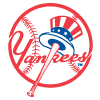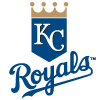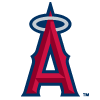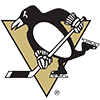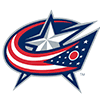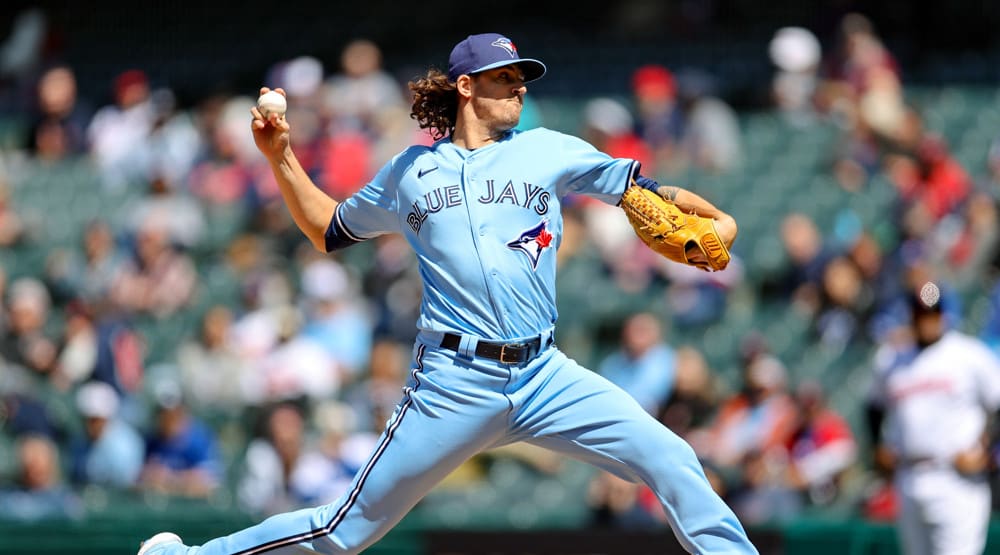Scouting Pitchers: Atlanta Braves
by James Benkard, RotoWire Writer
After a strong start, the Braves' lead in the NL East has disappeared. They are in a dogfight with Philadelphia, which has played very well recently and has a better offense. Atlanta will have to make do with its pitching, which is currently fourth in the NL with a 3.60 ERA, and by stringing together hits without Chipper Jones. My NL season preview contained some good stuff on the Braves. Here are some additional thoughts.
Tommy Hanson has predictably bounced back from two bad months, fashioning a 2.75 ERA in the second half. Nevertheless, Hanson's stuff has declined. His fastball has been 91-93 during recent starts, touching 95. Hanson's control has brought him around. He can back-door his slider, currently at 82-84, to left-handers pretty regularly. When push comes to shove, Hanson prefers his slider to his 73-76 mph curveball. He seems to use the curve as an unexpected change of pace. The curve is still an outstanding pitch, with a huge break. Hanson's changeup is a bit of a mystery to me. The radar gun (82-84) says he is throwing it, but there isn't much movement.
Hanson is fun to watch because he has excellent stuff and is fearless and unpredictable. Hanson's breaking stuff is so good that there is the danger he won't use his fastball enough. He is establishing the fastball well enough recently. Hanson starts getting hit when he elevates the ball. As has been
Scouting Pitchers: Atlanta Braves
by James Benkard, RotoWire Writer
After a strong start, the Braves' lead in the NL East has disappeared. They are in a dogfight with Philadelphia, which has played very well recently and has a better offense. Atlanta will have to make do with its pitching, which is currently fourth in the NL with a 3.60 ERA, and by stringing together hits without Chipper Jones. My NL season preview contained some good stuff on the Braves. Here are some additional thoughts.
Tommy Hanson has predictably bounced back from two bad months, fashioning a 2.75 ERA in the second half. Nevertheless, Hanson's stuff has declined. His fastball has been 91-93 during recent starts, touching 95. Hanson's control has brought him around. He can back-door his slider, currently at 82-84, to left-handers pretty regularly. When push comes to shove, Hanson prefers his slider to his 73-76 mph curveball. He seems to use the curve as an unexpected change of pace. The curve is still an outstanding pitch, with a huge break. Hanson's changeup is a bit of a mystery to me. The radar gun (82-84) says he is throwing it, but there isn't much movement.
Hanson is fun to watch because he has excellent stuff and is fearless and unpredictable. Hanson's breaking stuff is so good that there is the danger he won't use his fastball enough. He is establishing the fastball well enough recently. Hanson starts getting hit when he elevates the ball. As has been written, Hanson doesn't have the motion of someone who will throw 96 well into his thirties. Perhaps he can adapt in the future by adding a sinker or refining his changeup. A more effective change would contrast with his power repertoire.
Tim Hudson has been everything a team would want. He has come back from Tommy John surgery to rank fifth or better among many of the major categories for NL starters. Hudson has excellent command of his 89-92 mph sinking fastball, and his slider at 83-86. He'll toss in a 73-75 mph curveball. He's a double-play machine, with 28 turned behind him this year. Ordinarily, a sinking fastball needs to be 93 mph or above to induce hitters to swing and miss. Hudson's is an exception because of its great late movement.
Hudson's slider has been particularly effective against right-handed batters, who have hit .204 with five home runs in 362 at-bats. Hudson doesn't just throw it down and away – like Hanson, he'll hit the inside or outside corners with it. There aren't many pitchers who can do that. In a testament to his control, umpires are giving Hudson a wide strike zone.
Jair Jurrjens is at 89-94 with a 78-81 mph slurve and his plus 81-85 mph changeup. I profiled Jurrjens in 2008 and liked what I saw. He missed May and June with a hamstring injury. He has pitched well since his return, with a 3.47 ERA since the All-Star break. He tossed seven scoreless innings against the Marlins on September 4. Jurrjens has a bit of a short-armed delivery, which limits his fastball's movement, but he commands it well. Jurrjens' slider is more of a slurve. He can give it a curve's top-to-bottom break as well as a slider's right-to-left. His changeup is still his best pitch. It doesn't have much movement, but Jurrjens throws it with great deception.
Jurrjens' statistical profile is reasonably strong. He is efficient (15.7 P/IP in his career) and has a neutral G/F ratio (0.75 G/F). He can improve against left-handed hitters. Right-handers have hit .229 with 74 walks off of Jurrjens in his career, while lefties are at .266 with 122 walks in fewer at-bats. Perhaps he could pitch more to contact with his changeup, or refine a two-seamer.
Derek Lowe is pitching with a sore elbow as a result of a loose bone chip that may require surgery after the season. He made his September 5 start. Lowe works his high-80s two-seamer in and out, and his sinker is 87-91. He also has an 82-84 mph slider. Lowe comes inside often, especially to left-handers, to move their feet, then goes away with the sinker to get them to roll over on the ball. As with most sinkerballers, Lowe's stuff has good late movement, so hitters can't tell the pitch and location until it's too late. He works left-handed hitters who hang over the plate looking to drive the ball with inside pitches they can't handle.
Lowe's stuff has declined, creating longer innings. His G/F (1.37) and double play support (20 this season) are still strong. Lowe has actually been more effective in 2010 (.755 opposition OPS) than he was in 2009 (.799). As long as his elbow holds up, I don't see why he can't be a viable part of Atlanta's playoff push.
Mike Minor graduated to the majors barely a year after being drafted seventh overall from Vanderbilt. He sped through Double-A (2-6, 4.03 in 15 starts) and Triple-A (4-1, 1.89 in six starts) in 2010. Minor has good velocity (92-93) for a left-hander, and his 81-83 mph changeup has nice fade. At the Braves' request, Minor junked his slider in favor of his curveball, and it has some bite. Minor doesn't get full arm extension during his motion, and he stands fairly upright. Like Hanson, he relies on arm strength more than he should. Yet he's certainly a good prospect for the next few years.
Billy Wagner is still dealing at 94-97 with an 82-85 mph slider in what will be his last year. He has maintained he is definitely gone in 2011 to be a family man. We should admire Wagner's accomplishments: over 400 saves, the most strikeouts ever by a left-handed reliever (1,175 and counting), and the highest strikeout rate per nine innings of any active pitcher (11.75). Moreover, Wagner has been refreshingly and bluntly honest. He's a throwback, and fantasy writers should keep him in mind when we have the misguided notion to rip a player.
Craig Kimbrel has come forward as the closer of the future for Atlanta. He has a decent motion with which he deals 94-97, touching 99. At 5-foot-11, Kimbrel doesn't have the classic closer's size, but neither did Wagner. Kimbrel has battled his command of his slider, which has a wicked break. His fastball command looks fine, and I'm confident he can do the job as soon as 2011. Jonny Venters was relatively unheralded entering the year, but a move to the bullpen bumped his velocity to 93-96. Like Kimbrel, Venters struggles with his command of his mid-80s slider. He looks like a setup man.
Columbian Julio Teheran has emerged as the organization's top pitching prospect. Just 19, he went 9-8, 2.59 between Class A and Double-A, with 159 strikeouts in 143 innings. In the Futures Game, Teheran showed a 93-95 mph fastball, 82-83 mph changeup, and a 73-75 mph curveball. I liked his stuff, and he is obviously intense and competitive, but he didn't command his curve well. Teheran has a compact but rushed motion. He's still a string bean (6-foot-2, 150), so perhaps filling out will allow him to slow down.
Panamanian Randall Delgado also rode the fast track in 2010, as he struck out 162 in 161 innings between the Carolina and Southern leagues. Just 20, he has the classic #3 starter's repertoire: 90-94 mph fastball, 75-77 on the curve, and a low-80s change. Delgado's delivery has a high arm action, which I like. He does look like he will need to keep his lower half in shape. Dominican Arodys Vizcaino, obtained in the off-season in the Javier Vazquez deal, was emerging as well this year before a partial tear in a ligament in his right elbow knocked him out for July and August. He came back to make one appearance at Class A a couple of weeks ago, but hold off your interest in him until we can see he is healthy.
Atlanta has had a lot of good news in 2010: Jason Heyward is a star, Martin Prado has matured, their rotation has stayed healthy, and some pitching prospects are on track. Bobby Cox has gotten a lot out of bullpen arms such as Peter Moylan and Takashi Saito. Omar Infante has been a good acquisition, and Troy Glaus was certainly worth the $1.75 million. Freddie Freeman is looking like the first baseman of the future, and there's nothing wrong with Brian McCann.
At the same time, it would help to have Chipper Jones back. The offseason trade of Rafael Soriano for Jesse Chavez, who was so ineffective he was shipped to Kansas City, doesn't look very good. Center field has been a disaster area. Nate McLouth and Rick Ankiel haven't hit, and prospect Jordan Schafer has had a lost year. Other top prospects, like Cody Johnson, Zeke Spruill, and Adam Milligan, also struggled in 2010.
It's tempting to vote for a feel-good story. The retirements of Cox and Wagner qualify the Braves as such. The question is whether the Braves have enough offense. It's hard to say when their lineup – with the trades for Alex Gonzalez and Derrek Lee, and the return of McLouth - has only recently coalesced. I like the Braves, but like the Rays, they'll have to win the 3-2 games. It's hard to limit the Phillies to two runs.














